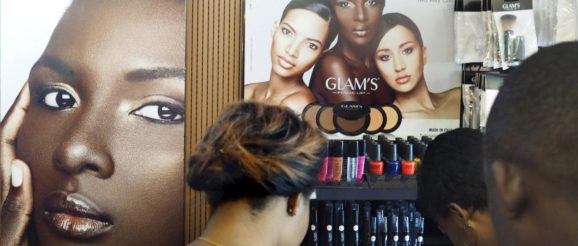African scientists are leading the next wave of innovation and research on black skin and hair


For decades, the innovation and formal research on products for black skin and hair was limited on the global stage as beauty brands multinationals focused their research on caucasian skin with only slight modifications to products for potential customers with darker skin.
But in recent years, there has been a sharp rise in African beauty brands or African diaspora niche brands that have organically built a customer base providing products made for those with black skin and hair. With Africa’s beauty and personal care market estimated at $11 billion in 2017, the continent is being seen as a major growth frontier for majors including L’Oréal and Unilever pursuing increasing activity in the region.
In 2013, L’Oréal acquired the Kenyan company behind Nice & Lovely, a well-known mass-market skin and hair brand, for an estimated $17.6 million. The next year, L’Oréal bought Carol’s Daughter, a business that was started by Lisa Price in her Brooklyn, New York kitchen in 1993, but was valued at $27 million at the time of acquisition. A few years later in 2017, Liberian-born Richelieu Dennis, the founder of one of the best known black skin & hair brands, Shea Moisture, sold his New York-based company Sundial Brands to Unilever. At the time of sale his company was estimated at a whopping $240 million.
While acquisitions of brands serving black people in and outside of the continent is part of the growth strategy for global players, the other key pillar is research and innovation. This month, L’Oréal awarded three leading African scientists its African Hair & Skin Research grant award. The three research areas—post-acne hyperpigmentation in Dakar, the impact of air pollution on human skin in Nairobi and the prevalence and types of hair loss in Lagos are extremely relevant themes in deepening the understanding of unique challenges faced by black people when it comes to skin and hair.

L’Oreal jurors and grant award winners
Nairobi’s particulate matter is 70% above the maximum recommended level according to the WHO and this trend is seen in many developing cities. The issue of hyperpigmentation—the darkening of parts of the skin, mostly resulting from acne is a much more prevalent issue for dark skin types than for light skin. Hair loss in the form of traction alopecia, is considered one of the most common forms of hair loss in black people and results from hair being pulled too tight and too long. It can be caused by braids, wigs or weaves.
The need for increased innovation and research here can’t be overstated. Africa accounts for 25% of skin problems, but only 1% of global research output (across all fields.) Black hair and skin is indeed different in so many ways that there is little surprise that products from mainstream brands never fully catered well to black people’s needs.
Changing times
Times are changing with consumers of color demanding more of the products they are buying especially given the success of niche brands directly focusing on their unique needs. Makeup brands can no longer get away with having only two or three foundation options for darker skin tones—not in a world where Rihanna’s Fenty Beauty introduced 40 shades of foundation making a reported $100 million in the first 40 days and nearly $600 million in the first year.
Darker shades were the first to sell out showing a great need in this market. In this generation of youtube and Instagram fashion and beauty reviewers, the savvy customer on the continent knows that there are products out there that are working for people with similar skin and hair and therefore has higher expectations.
Global and regional trends will call for a better understanding of how to make products suited for black skin and hair. UV rays in the global south are stronger than in the North and will continue to be so with global warming. Research shows that while wrinkles are the main sign of aging on caucasian skin, aging from sun damage manifests itself in a different way on darker skin—in the form of uneven pigmentation and dark spots.
As such, there is some scientific truth to the saying, “Black don’t crack.” It doesn’t mean that UV rays leave dark skin undamaged – the effects just manifest in a different way. And thus, even though dark skinned people have lower chances of getting skin cancer than their lighter-skinned counterparts, they actually have higher chances of dying from it as it will most likely go undiagnosed longer.
While it would be naïve to ignore the role the global beauty industry has played and sometimes continues to play in creating some of the current issues plaguing black skin and hair, this is actually one of those moments when needs might align to better serve these customers.
For example, L’Oreal plans to increase its customer base by 1 billion people with the lion’s share of new customers coming from emerging markets. To do this, they have spent the past 15 years increasing knowledge on African hair and skin, building medical and scientific partnerships with African scientists and acting as a convener for these scientists.
On their part, the African scientists are benefiting from access to much needed research funding, increased opportunities for collaboration and partnerships that see their research make it into global journals driving the discussions around black skin and hair.
These collaborations should be good for the business of global beauty conglomerates, but also great for building the scientific knowledge needed to provide better products for black skin and hair.
African researchers benefit from being able to conduct research on black people while global beauty conglomerates benefit from the insights that better enable them to fully tap into this market opportunity. The black consumer on their part gets increased access to better products.
Sign up to the Quartz Africa Weekly Brief here for news and analysis on African business, tech and innovation in your inboxd
